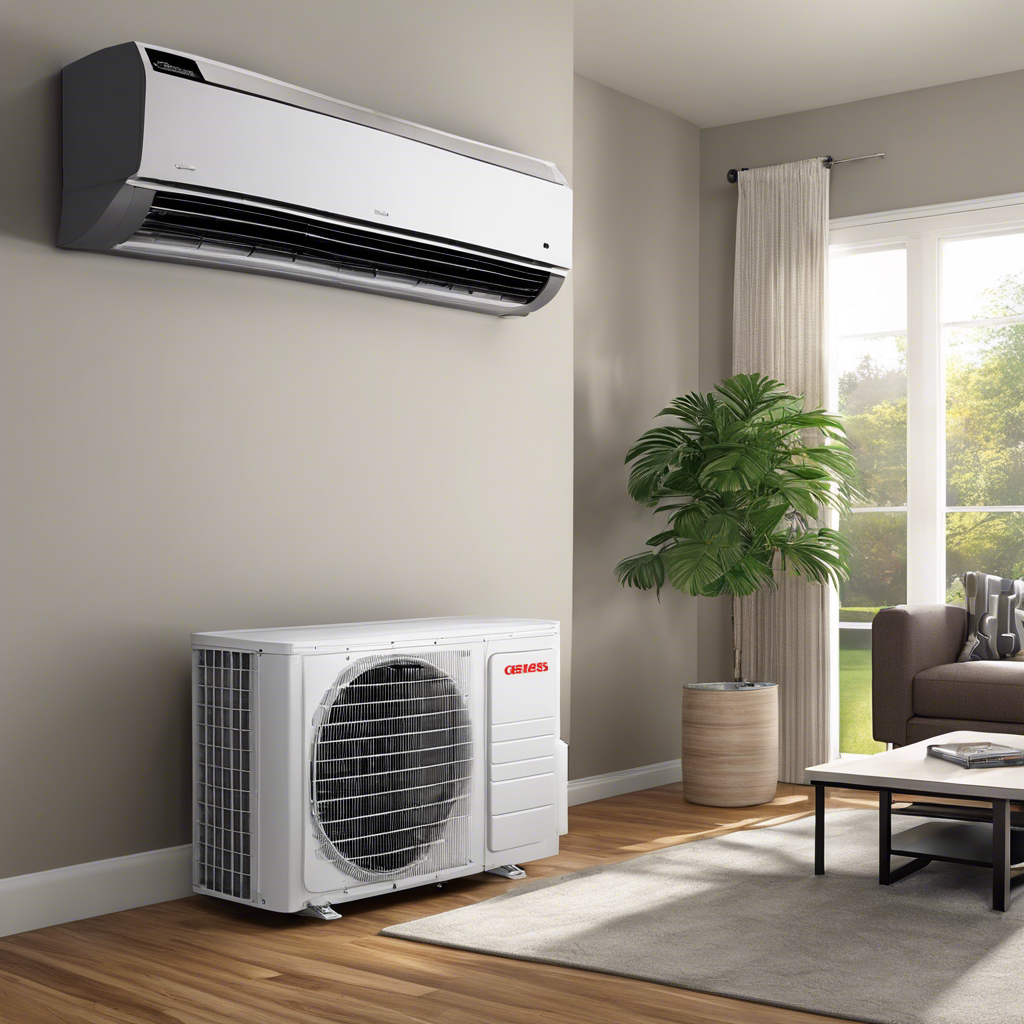Determining whether your HVAC system includes a heat pump is essential for optimizing its performance and ensuring optimal comfort in your home or workplace. This article will guide you through the process of identifying whether your HVAC system incorporates a heat pump.
By understanding the key differences between heat pumps and conventional HVAC systems, you will be able to make an informed assessment. We will explore various methods, such as inspecting the outdoor unit and checking for specific indicators, as well as provide tips for seeking professional assistance.
Whether you are a homeowner or a business owner, this article aims to equip you with the knowledge needed to determine if your HVAC system includes a heat pump, allowing you to make informed decisions about your heating and cooling needs.
Key Takeaways
- Heat pumps transfer heat from outdoors to indoors using a subordinating conjunction.
- Heat pumps can function as both heating and cooling systems, while conventional systems are usually designed for one function only.
- Heat pumps have a higher energy efficiency with a Coefficient of Performance (COP) greater than 3.
- Professional technicians can accurately assess and identify the features of your HVAC system.
How Does a Heat Pump Work
A heat pump works by using a subordinating conjunction to transfer heat from the outdoors to the inside of a home, making it an energy-efficient alternative to conventional heating systems.
The heat pump is a crucial component of the heating and cooling system in a home. It consists of an outdoor unit and an indoor air handler.
The outdoor unit absorbs heat from the air outside and transfers it to the indoor air handler. The reversing valve in the heat pump allows it to switch between heating and cooling modes by changing the flow of refrigerant.
When in HEAT mode, the heat pump extracts heat from the outdoor air and transfers it inside to warm the home. A thermostat controls the heat pump, allowing homeowners to set the desired temperature.
To determine if your HVAC system includes a heat pump, you can check the model number or consult the manufacturer’s information.
Key Differences Between Heat Pumps and Conventional HVAC Systems
When comparing heat pumps to conventional HVAC systems, it is important to understand the key differences that set them apart in terms of their heating and cooling capabilities.
One of the main differences is the presence of an outdoor unit in heat pumps, which is responsible for absorbing heat from the outside air and transferring it indoors. Conventional systems, on the other hand, do not use an outdoor unit for heating.
Another difference is that heat pumps can function as both heating and cooling systems, while conventional systems are typically designed for one function only. Heat pumps achieve this versatility by reversing the flow of refrigerant, allowing them to provide both heating and cooling.
Additionally, heat pumps are more energy-efficient than conventional systems, as they can achieve a Coefficient of Performance (COP) greater than 3, making them a more sustainable choice.
Signs That Your HVAC System Includes a Heat Pump
To determine if your HVAC system includes a heat pump, there are specific signs to look for that indicate the presence of this versatile heating and cooling component.
One of the most obvious signs is if your outdoor unit blows warm air when the thermostat is set to HEAT mode. This is a clear indication that your HVAC system includes a heat pump.
Another sign is the presence of a reversing valve inside the outdoor unit, which allows the system to switch from cooling to heating mode.
Additionally, you can check for labels on the outdoor unit that indicate it is a heat pump, such as manufacturer labels stating ‘heat pump’ or model numbers with ‘HP.’
Common Misconceptions About Heat Pumps
The common misconceptions about heat pumps often revolve around their efficiency and effectiveness in various climates.
One misconception is that heat pumps are not suitable for colder climates. While it is true that heat pumps may struggle to extract heat from extremely cold outdoor air, advancements in technology have made them more efficient in colder temperatures.
Another misconception is that heat pumps are less efficient than gas furnaces. In reality, heat pumps can be more efficient for heating purposes, especially in mild climates.
Additionally, some people believe that heat pumps are noisy. However, modern heat pumps are designed to operate quietly, and noise levels are comparable to other HVAC systems.
It is important to consider factors such as proper sizing, insulation, and regular maintenance when assessing the efficiency and effectiveness of a heat pump in a specific climate.
Professional Assistance for Determining Your HVAC System’s Features
Professional technicians can provide accurate assessment and identification of the features of your HVAC system. When it comes to determining whether your HVAC system includes a heat pump or a conventional gas furnace, seeking professional assistance from a trusted HVAC company like Grove Heating & Cooling is crucial.
Their technicians have the expertise and knowledge to examine your system and determine its features. They can evaluate if your system operates in both heating and cooling modes, and if it has an outside unit that provides heat during the colder months. Additionally, they can determine if your system is a split system, where the outside unit is responsible for cooling, while the inside unit provides heat.
Frequently Asked Questions
How Do I Know if My HVAC System Has a Heat Pump?
To determine if your HVAC system has a heat pump, check if the exterior unit blows air when the thermostat is set to HEAT mode. Look for labels such as “heat pump” or “model number with HP” on the outdoor unit.
Does HVAC Include Heat Pump?
Yes, HVAC systems can include a heat pump. Heat pumps offer the benefits of energy efficiency and dual functionality for heating and cooling. However, common issues and troubleshooting may arise, and the effectiveness of heat pumps can be influenced by climate. Consider the cost, lifespan, and maintenance requirements before upgrading your HVAC system.
How Do I Know What Type of HVAC System I Have?
To determine the type of HVAC system you have, inspect the outdoor unit for a metal plate with the model number, search the brand and model online, check if the exterior unit blows air in HEAT mode, look for a reversing valve, or seek professional assistance.
How Can You Tell the Difference Between a Heat Pump and a Furnace?
A heat pump differs from a furnace by transferring heat from outdoors to inside the home, while a furnace generates heat by burning fuel. Factors such as energy efficiency, cost, maintenance requirements, and climate considerations should be taken into account when deciding between the two.
Conclusion
In conclusion, accurately determining if your HVAC system includes a heat pump is crucial for proper maintenance and understanding its functionality.
By inspecting the outdoor unit, researching the brand and model online, and checking if the exterior unit blows air in HEAT mode, you can identify the presence of a heat pump.
However, if uncertainty remains, it is recommended to seek professional assistance from an HVAC technician.


